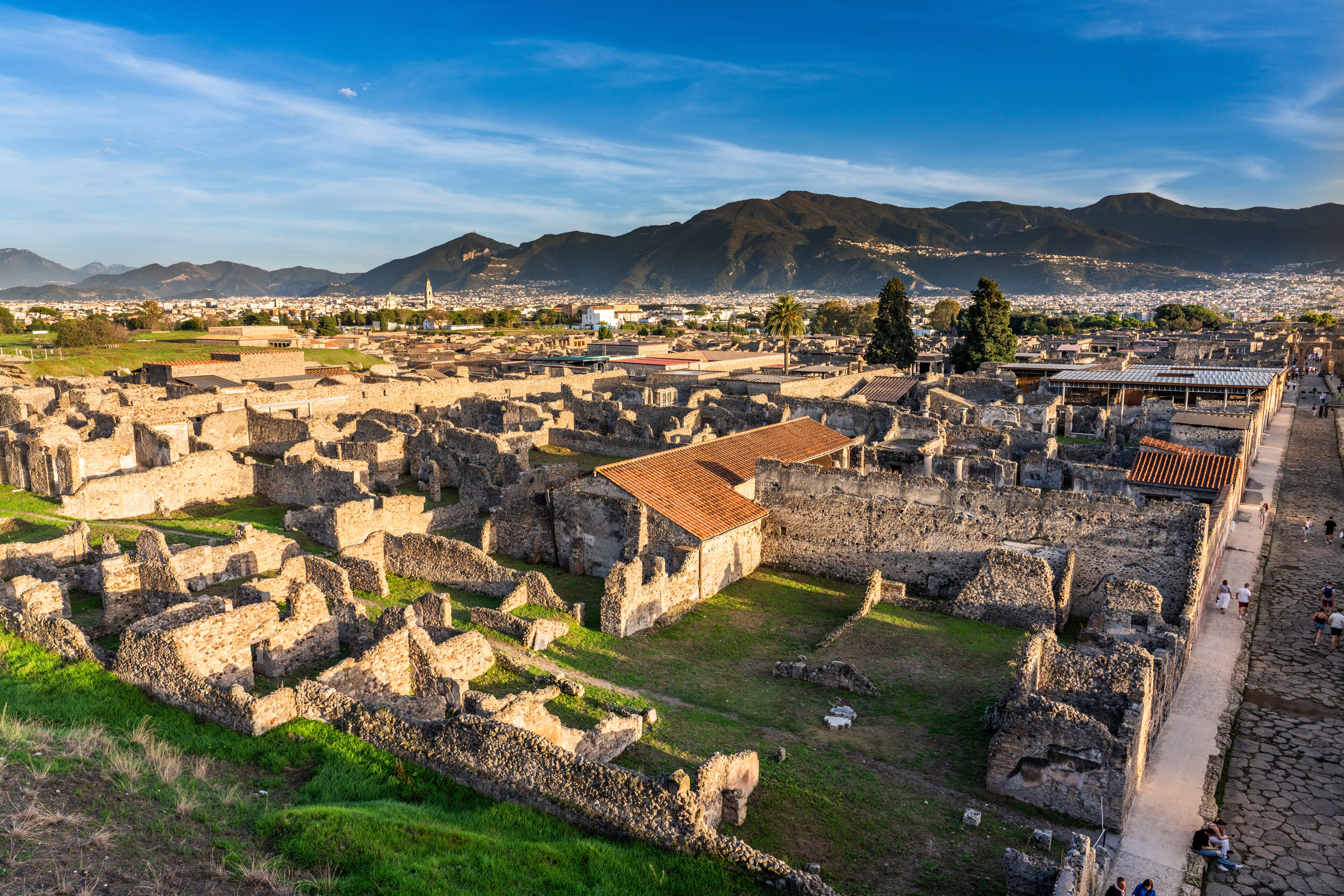Historical Significance

Region V is important for its well-preserved buildings and artworks. Excavations have revealed decorated homes, public eateries, and fascinating frescoes. These findings provide insights into the social and cultural life of Pompeii before the eruption of Mount Vesuvius in AD 79.
Key Sites in Region V

-
The Thermopolium
The Thermopolium in Region V was an ancient restaurant selling hot food and drinks. It is located at the corner of Vicolo delle Nozze d’Argento and Vicolo dei Balconi.
The L-shaped counter is decorated with vibrant paintings. One side shows a Nereid riding a hippocampus with dolphins. The other side depicts scenes of the shop's activities, acting as an advertisement.
Bone fragments found in the counter's containers indicate a variety of food was sold there. These include items depicted in the counter's still-life scenes. This Thermopolium offers a glimpse into the daily culinary life of Pompeii. Excavations of this site took place from 2018 to 2020.
-
The House of Orion
The House of Orion faces Vicolo dei Balconi. It is famous for its elegant floor mosaics. The house is named after a rare mosaic of the hero Orion being turned into a constellation by Zeus. Another mosaic shows Orion hunting monsters with the help of a butterfly, reflecting the high cultural level of the owners.
The house features a spacious central atrium. Rooms around the atrium are decorated in the First Style, with stucco frames and ancient Pompeian-style panels. This retro style contrasts with the modern Fourth Style pictorial cycles.
Excavations of this site took place from 2018 to 2020.
-
The House with the Garden
Located on Vicolo dei Balconi, the House with the Garden is named for its large garden with a frescoed portico. One room, called the 'Room of the Skeletons,' contained the remains of about ten people who sought refuge during the eruption.
The garden features frescoes of Venus and Eros and a refined portrait of a woman, likely the lady of the house. A charcoal inscription found in the atrium suggests the eruption may have occurred on October 17, AD 79, rather than the traditionally believed date.
Excavations of this site took place from 2018 to 2020.
-
The House of Leda and the Swan
The House of Leda and the Swan is located on Via del Vesuvio. It is named after a refined fresco showing Jupiter, as a swan, with Leda. The house features Fourth Style decorations with floral ornaments, griffins with cornucopias, flying cupids, and animal fight scenes. The frescoes even extend to the reconstructed collapsed ceiling.
The atrium has vivid frescoes, including one of Narcissus admiring his reflection and another of Hermes (Mercury) in bright colors. The house also had a storage area where many glass containers, amphorae, and a bronze situla were found.
Excavations of this site took place from 2018 to 2020.
-
House of Marco Lucretius Frontone
Behind a simple façade, the House of Marco Lucretius Frontone is one of Pompeii's most elegant homes. It belonged to Marcus Lucretius Fronto, a magistrate, whose name appears on electoral inscriptions on the façade.
The atrium features a marble bath and a table with lion-paw-shaped feet. The tablinum has frescoes of Bacchus and Ariadne, and the loves of Venus and Mars.
The garden walls are decorated with hunting scenes of lions, panthers, bears, and cattle, following the trend of semi-open area decorations.
Excavations of this site took place from 1899 to 1900 and from 1972 to 1974.
Region V of Pompeii showcases ancient life through its well-preserved buildings and artworks. From the busy Thermopolium to the elegant homes with intricate mosaics and frescoes, this area offers a glimpse into the daily lives and culture of Pompeii's residents. Ongoing excavations and preservation efforts keep enhancing our understanding of this remarkable city.